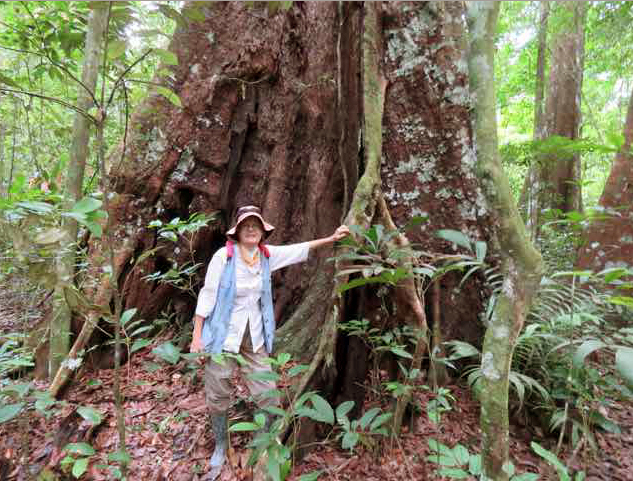How a Passion for Birding Inspired One Canadian Volunteer in Guyana
Story

Inspired by her passion for birding, 72-year-old Merle Kindred, originally from Penticton, B.C., is using birds as a bridge to connect Guyana’s Indigenous rainforest communities with tourists.
The Cuso International volunteer had already been working in Guyana, based in Georgetown for six months as a strategic planning advisor. Her placement was wrapping up, but before returning to Canada, she decided to spend some time in Region 2 along the Atlantic Ocean coast to indulge in her hobby: bird watching.
With more than 900 migrant and resident bird species, Guyana is a birding paradise. Kindred spent 2.5 days in the rainforest and savannah scoping out exotic blue-grey tanagers and crested oropendolas, and while there, she realized there was an opportunity to boost tourism in the area by supporting local Indigenous communities.
Staying at a small eco-lodge called Adel’s Rainforest Resort, Kindred travelled by river to Indigenous villages and learned of their aspirations to build small eco-resorts, similar to Adel’s, which could inspire increased appreciation of the natural world and encourage tourism interested in sampling authentic Indigenous life.
Next, Kindred took her idea to create a new volunteer placement for an eco-development advisor through Cuso International; the organization accepted her proposal. She’s been on this placement for three months now and estimates she’s already had an impact on at least 50 people who then share learnings with their family and neighbours.
She tries to spend as much time as possible integrating with the communities, triangulating her time between two villages, the resort and Georgetown. “I do a lot of listening and watching,” Kindred says. “As an example, I do embroidery and beadwork, so I brought things with me to sit with the villagers. It’s a way to teach them a handicraft and get discussions going.”
In the two Indigenous villages where Kindred spends her time, one has a population of about 3000 people; the other is about 1,500. The communities survive on agriculture, primarily growing cassava and fishing, but they have to travel 1.5 hours by boat to reach the main town where they can stock up on vegetables and fruits. Kindred is working alongside the communities to improve their agriculture productivity by encouraging villagers to visit Adel’s shade house with a plastic roof and raised beds to keep the ants away. This can be replicated at relatively low cost in the villages.
When it comes to tourism, Kindred has been exploring options with the locals to showcase their land with activities such as canoeing, and of course, birding. She has been photographing the species she has seen so far—about 150—with the goal to create a book that has, not only the local names for the birds, but also the Indigenous names. She is helping to organize training for villagers about bird guiding and teaching tourists about other flora and fauna as well as the business management skills needed for operating an eco-resort.
Having the resources to attract and host tourists is one thing, but getting them to a country like Guyana, known for violence, is another issue.
“I’ve suggested to the Ministry of Business Department of Tourism a new slogan geared especially toward the million plus Guyanese diaspora who’ve left this large country with a small population of approximately 750,000: ‘Give Guyana another chance,” she said. “I’m certainly glad I did.”